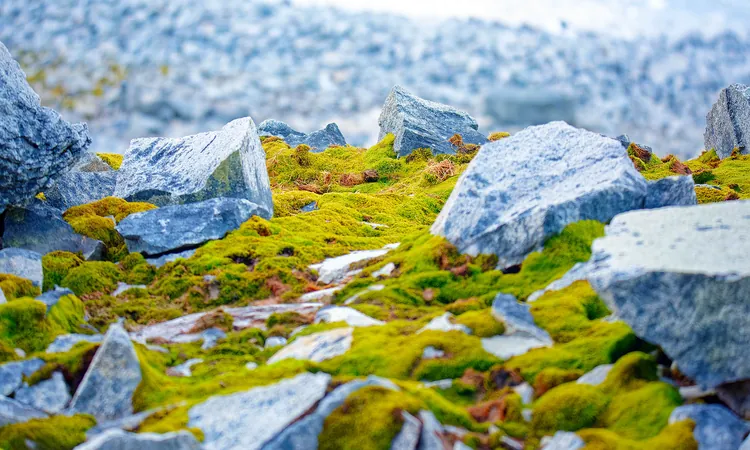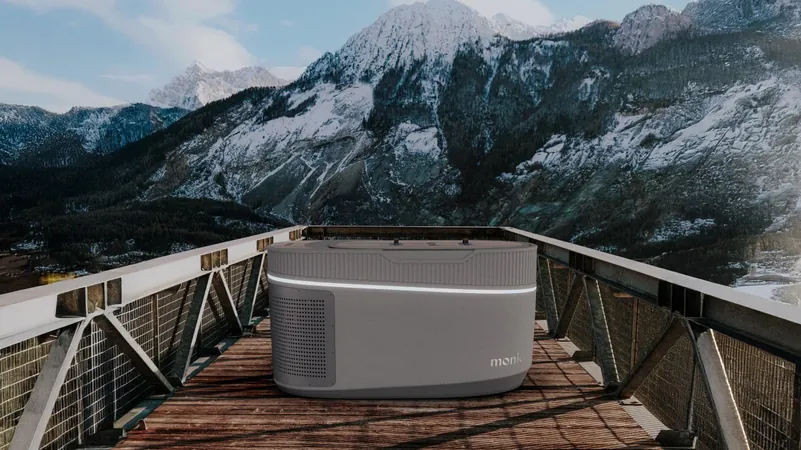
Unveiling Antarctica's Hidden River Landscapes: Secrets Beneath the Ice
2025-07-15
Author: Daniel
Ancient Secrets Beneath the Ice
Beneath the thick ice of East Antarctica lies a trove of secrets from a warmer, prehistoric era. For years, scientists have speculated about the ancient landscapes hidden beneath this icy expanse, and their recent discoveries are set to change our understanding of climate change and sea levels.
Revolutionary Findings of Ancient River Systems
A groundbreaking study by a team from Durham University has revealed remnants of vast prehistoric river landscapes concealed under the East Antarctic Ice Sheet (EAIS). In their extensive examination across a staggering 3,500 km (2,175 miles), researchers identified 31 flat surfaces buried under ice as thick as 2,500 meters (8,200 feet). These long-hidden plains provide a glimpse into how our planet looked long before it froze over.
The Birth of a Vast Fluvial Landscape
The scientists discovered that these plains are ancient river systems that emerged after East Antarctica separated from Australia. Dating back between 80 to 34 million years, these landscapes formed as rivers sculpted the land into low-relief plains, echoing similar features found along the Australian coast.
Surviving the Icy Onslaught
Remarkably, these river-carved surfaces have survived for over 30 million years, untouched by ice erosion. Instead, fast-moving glacial ice has created deep troughs around them, preserving their geological integrity. The cold, slow-moving ice above these plains ensures they remain undisturbed, providing a unique insight into ancient ecosystems.
Confirming a Water-Made Landscape
The researchers found that the geological characteristics of these surfaces confirm their origins as river systems rather than ice formations. Their consistent elevation and slope strongly support this theory, revealing how ancient forces shaped the region.
Implications for Future Climate Change
These ancient landscapes are not just relics of the past; they influence the flow of ice in the present and could play a vital role in the future of the EAIS. The buried plains may act as anchors for ice during warming periods, potentially slowing the retreat of grounding lines and stabilizing ice in areas that are critical for sea-level projections.
A Call for More Research and Understanding
The presence of these hidden river systems suggests that current models of ice sheet behavior are too simplistic, often overlooking these significant geological features. Researchers advocate for increased drilling and high-resolution studies to better understand how these landscapes contribute to ice stability and future sea-level rise.




 Brasil (PT)
Brasil (PT)
 Canada (EN)
Canada (EN)
 Chile (ES)
Chile (ES)
 Česko (CS)
Česko (CS)
 대한민국 (KO)
대한민국 (KO)
 España (ES)
España (ES)
 France (FR)
France (FR)
 Hong Kong (EN)
Hong Kong (EN)
 Italia (IT)
Italia (IT)
 日本 (JA)
日本 (JA)
 Magyarország (HU)
Magyarország (HU)
 Norge (NO)
Norge (NO)
 Polska (PL)
Polska (PL)
 Schweiz (DE)
Schweiz (DE)
 Singapore (EN)
Singapore (EN)
 Sverige (SV)
Sverige (SV)
 Suomi (FI)
Suomi (FI)
 Türkiye (TR)
Türkiye (TR)
 الإمارات العربية المتحدة (AR)
الإمارات العربية المتحدة (AR)